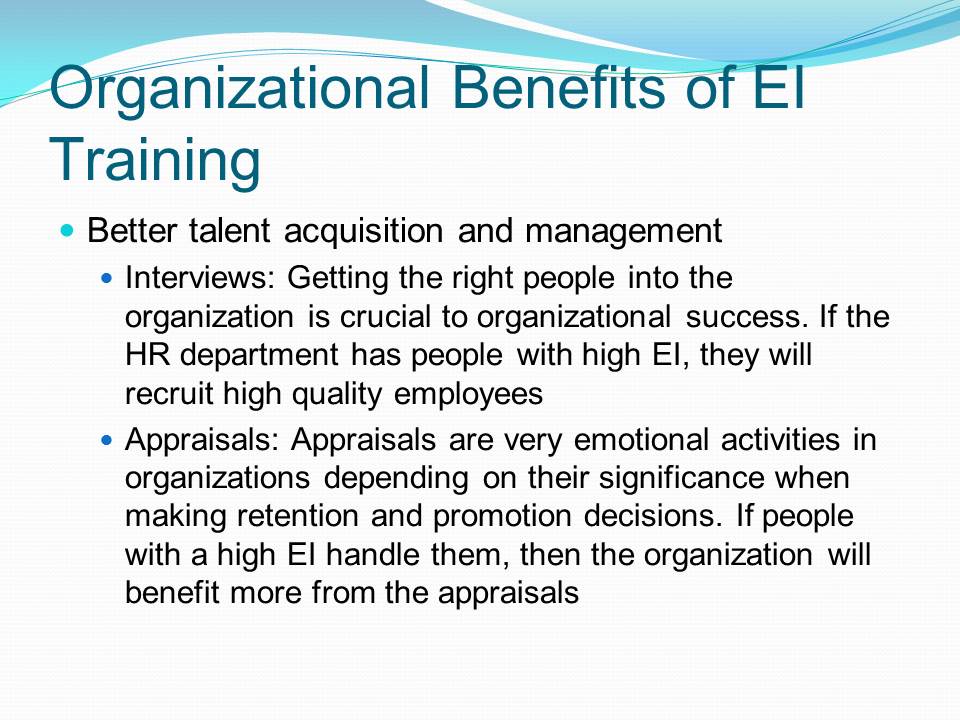What is Emotional Intelligence (EI)?
EI comes from two terms:
- Emotion: Emotions relate to feelings based on a person’s state of mind, usually determined by the immediate environment;
- Intelligence: Refers to the capacity to obtain and apply information and skills.
Therefore, EI is the capacity to obtain and apply information and skills pertaining to the management of emotions:
- EI is a meta-cognitive skill, that enables someone to mentally pull away from their current environment in order to analyze it for emotional cues.
Emotional Intelligence comes from two words. Emotions refer to personal feelings arising from the state of the mind of a person. This state of mind can be influenced by his immediate surroundings or by past experiences under consideration. Intelligence on the other hand refers to the ability of an individual to obtain and apply information and skills. Therefore, EI is the “capacity to obtain and apply information and skills pertaining to the management of emotions”. Please note that EI is a meta-cognitive skill. This implies that it is a skill that often requires an individual to take himself away from the current position to study the prevailing emotions, and to develop responses based on it.
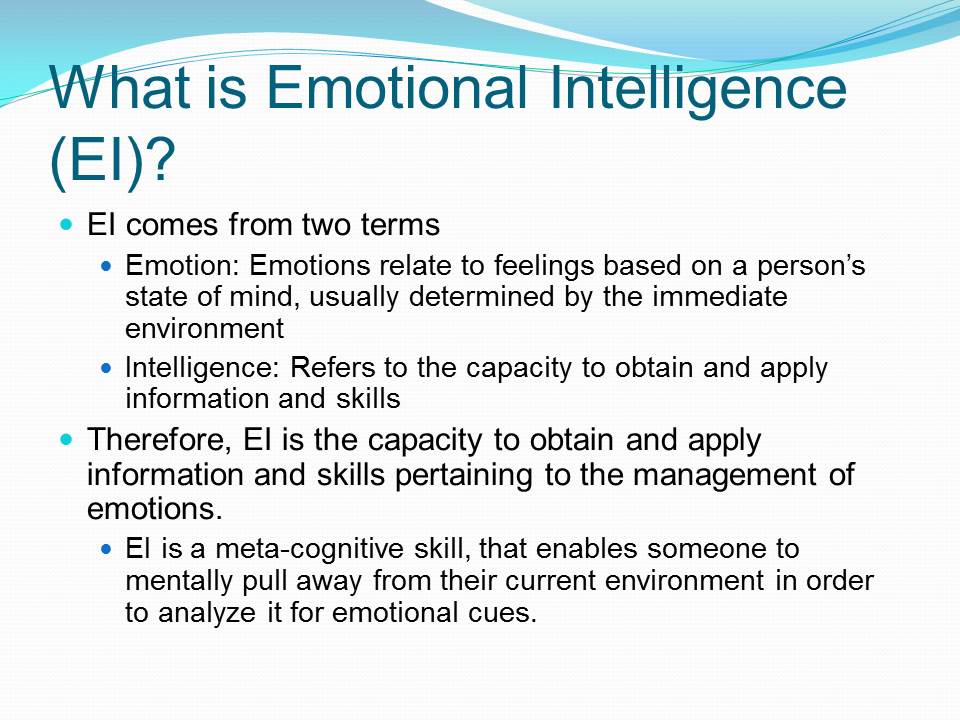
EI versus IQ
- IQ (Intelligence Quotient) is a good predictor of how someone will perform in school. However it is a poor predictor of how successful someone will become in life.
- EI is a better predictor of how successful someone will become in life.
- For an organization to be successful, it needs to be aware that IQ testing alone is not sufficient as an indicator of the performance of a potential employee.
- EI testing is a better predictor of the performance of the employee.
IQ is better known and more widely used compared to EI. There are subtle differences that exist between these two types of intelligence. For Instance, IQ can give an indication of how well someone will perform in school, but not how successful that person will become in life. EI predicts success in life much better than IQ. The implication of this relationship to organizations is that if an organization focuses on IQ testing alone, it may not have a proper view of an employees potential to perform well at work. EI is a better measure of this aspect.
This table compares three aspects of EI and IQ. First, EI predicts the chances of a person becoming successful in life, while IQ predicts how well someone will perform in school and in cognitive tasks. Secondly, EI gives a good indication of how well someone can relate with other people. On the other hand, IQ does not indicate an individual’s relational capacity. The third and most relevant aspect in this presentation is that it is possible to train employees to increase their IE. This is not possible with IQ. IQ is a static quality of the mind.
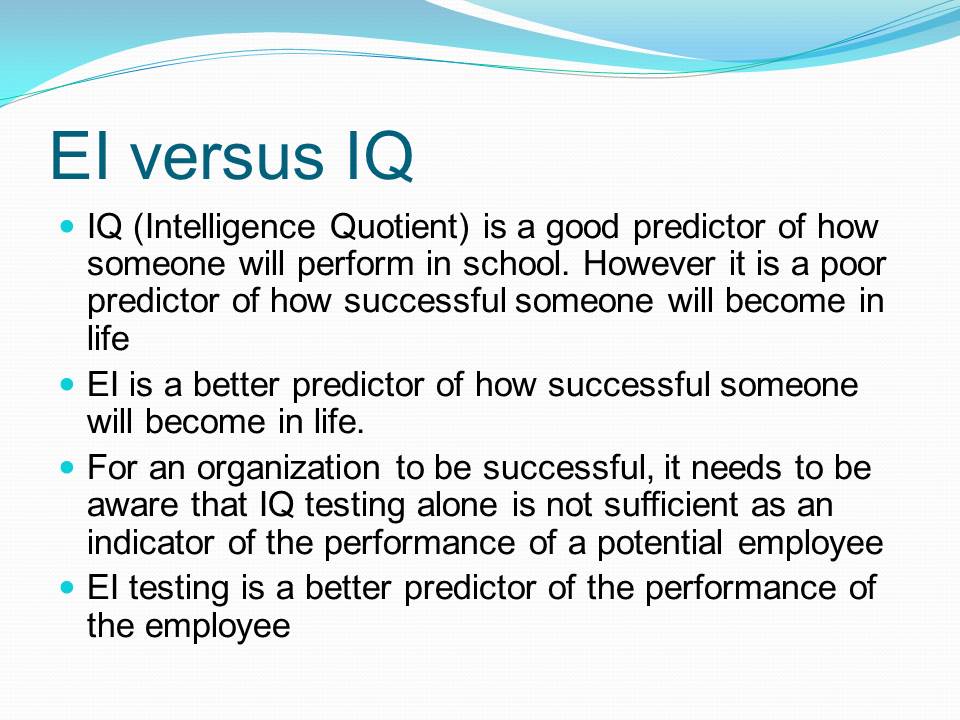
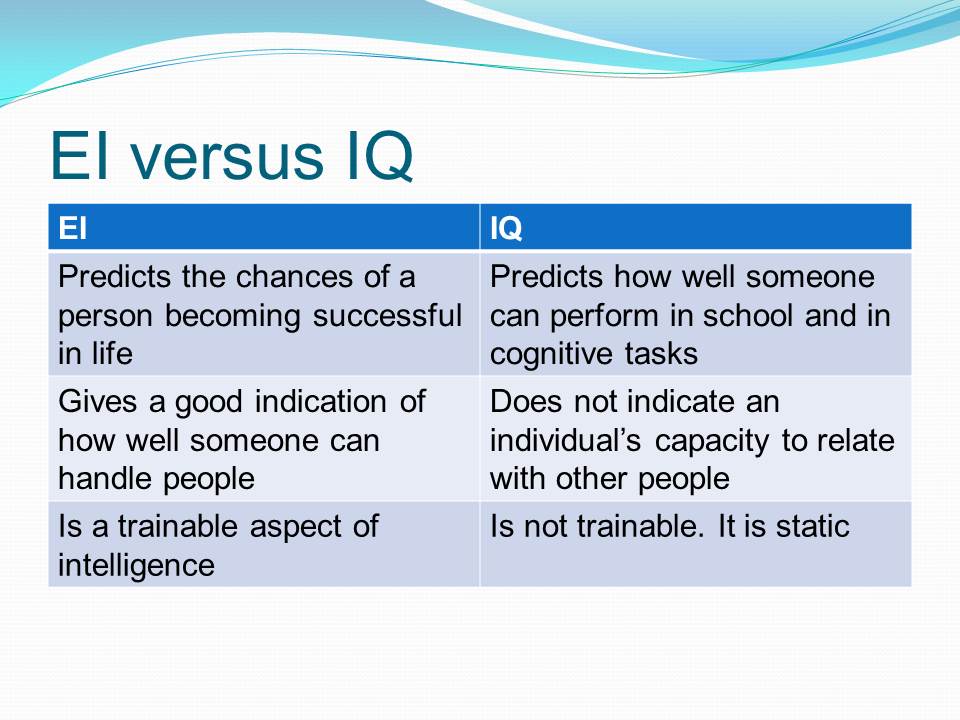
Aspects of EI: Reasoning with Emotions
- Reasoning with emotions refers to the ability to evaluate an emotion and to determine the best course of action. This is the response formulation stage.
- In a specific situation, reasoning with emotions often determines whether a situation spirals out of control, or goes back to normal.
- Someone with a higher EI will handle an irate customer better than the person who best understands the product, but has lower EI.
The second aspect of EI is reasoning with emotions. This is the ability to evaluate emotions in order to find the best course of action. This ability can influence whether a situation will spiral out of control or whether it goes back to normalcy. Someone good in reasoning with emotions will know how to handle an irate customer even without a detailed understanding of the product features a customer is complaining about.
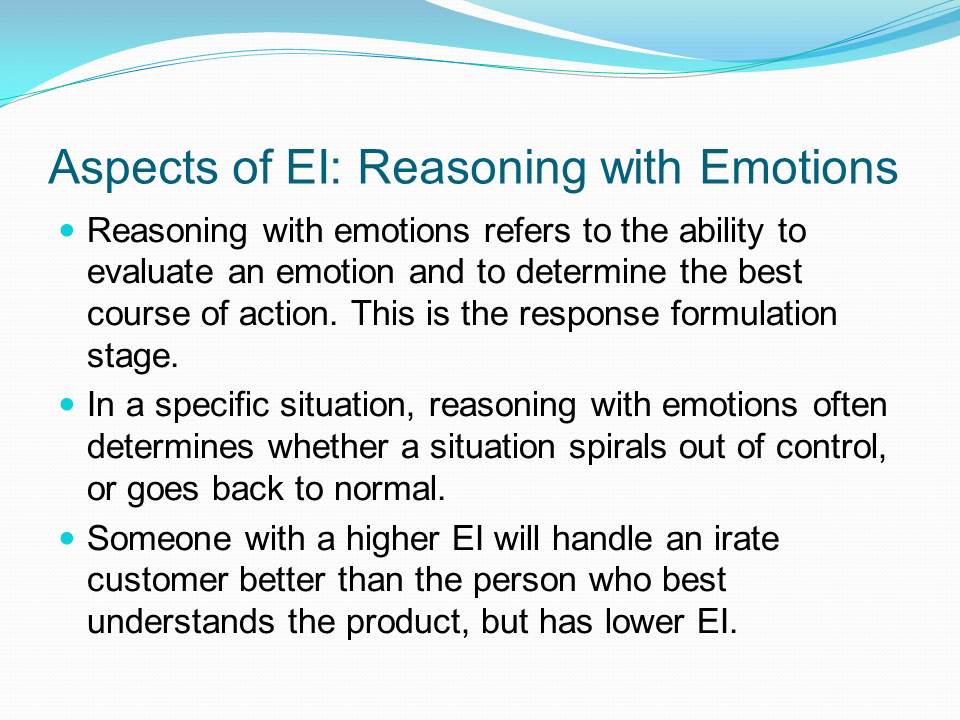
Aspects of EI: Perceiving Emotions
Perceiving of emotions is the first aspect of EI in the Salovey and Mayer Model.
EI requires individuals to possess the capability to distinguish and recognize emotions in other people:
- This involves an understanding of both verbal and non-verbal cues when communicating with other people
It also requires the capacity to recognize someone’s own emotions:
- The best way of knowing one’s emotions is to reflect and meditate on issues.
The Salovey and Mayer Model shows that IE has four aspects which we will apply to determine the importance of EI training for organizations. The first aspect is perceiving emotions. Perceiving emotions is the ability of an individual to identify emotions. This is either his own emotions, or the emotions of the people around him. It requires an understanding of both verbal and non-verbal cues present in all human communication processes.
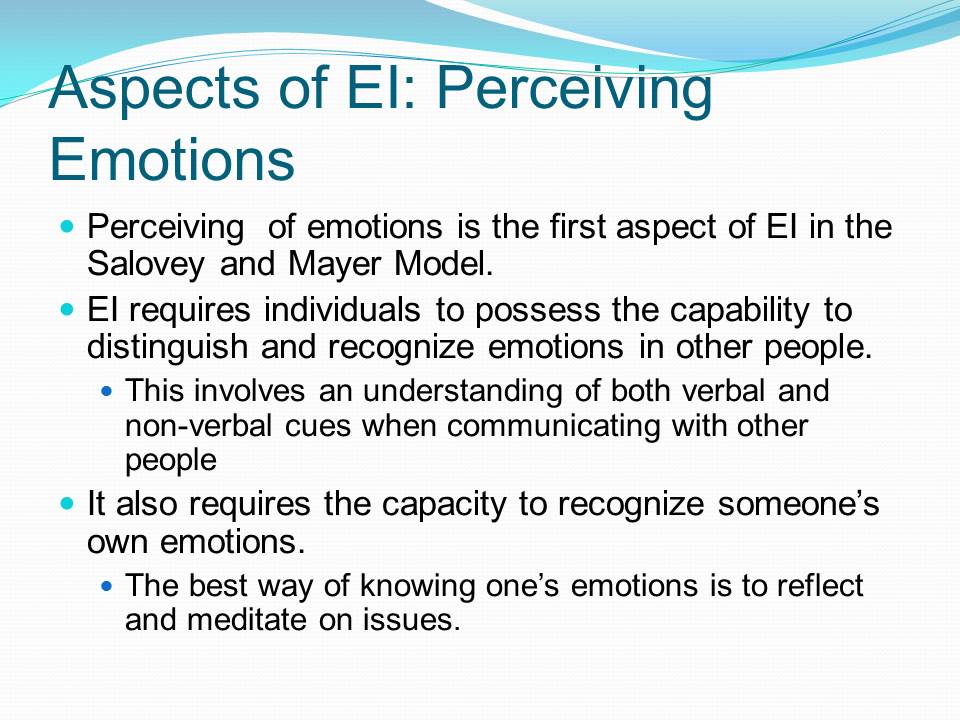
Aspects of EI: Understanding Emotions
- Understanding of emotions is developing the correct interpretation of an emotion that someone else displays.
- When a customer expresses anger, it is important to know whether the anger is due to delays in customer service, or a problem with the parking attendant!
- Understanding emotions is critical in implementing a response plan.
- EI calls for the understanding of the emotion displayed on the spot and formulating a response on the spot.
The third aspect of EI is understanding emotions. This aspect in interpretive in nature. The question a customer care staff member would ask himself is “why is this customer angry? Is she angry because of the product or is she angry because of the parking attendant?” The purpose of understanding emotions is also to develop a response plan. However, all this must happen on the spot. It is impossible to take off to another location to understand an emotion before engaging with the situation.
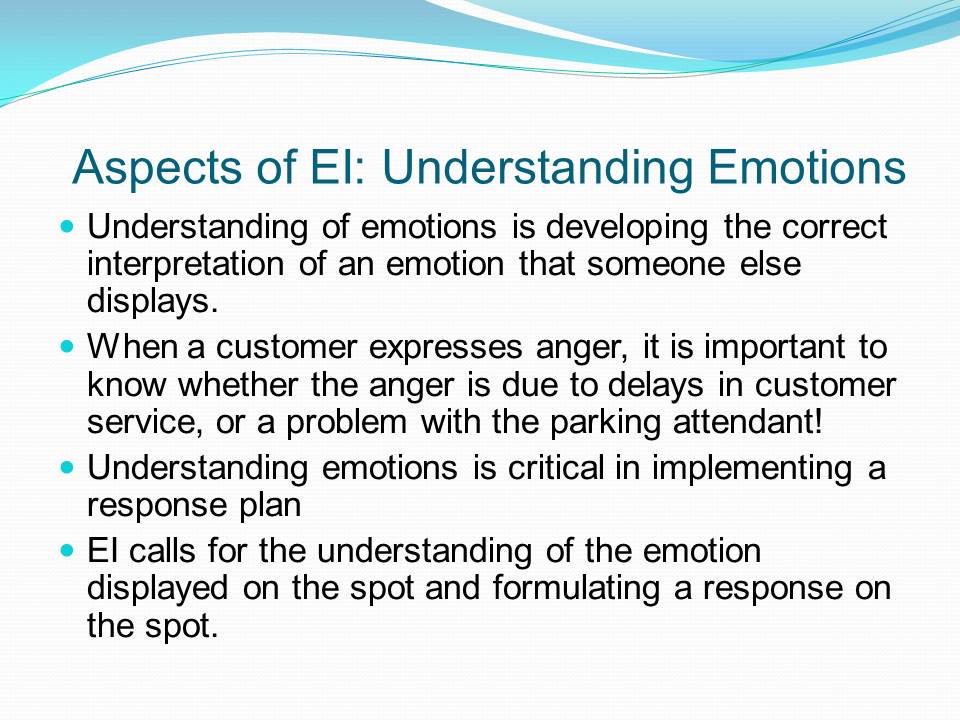
Aspects of EI: Managing Emotions
Managing emotions is the capacity of an individual to harness and control their emotional responses regardless of stimuli.
This is the most important component of EI.
The ability to manage emotions requires a conscious appraisal of the situation and a deliberate choice of response.
Managing emotions has two components:
- Regulation of personal emotions;
- Measured responses to stimuli.
The fourth and final aspect of EI is managing emotions. The emotions in question include internal and external feelings. Internally, a person needs the mental ability to control his emotions regardless of the disturbances in the external environment. It is the most important aspect of EI. This ability requires an act of the will. The person appraises the situation and makes a deliberate choice to respond in a particular manner. In summary, managing emotions require the capacity to self-regulate, and the capacity to influence the emotions of other people.

Organizational Benefits of EI Training
Better customer care:
- Every organization that has people with high EI will provide better customer care.
- Purchasing decisions are not just financial decisions. They are also very emotional processes.
- Getting repeat customers depends on how customers handle the post purchase dissonance. A customer service agent with high EI can influence this.
- Customers who are not happy with their purchase are better dealt with by employees with high EI because of the emotional issues that such customers stir up.
Three of the benefits that an organization experiences when it trains its employees in EI are as follows. First the organizations will have better customer care. When customers walk into a shop or an organization to buy anything, the experience is very emotional. It is not simply a financial experience. People with high EI skills can manage them better. Repeat customers are usually people who have had good experiences with a company. These experiences are usually emotional in nature. At the same time, some customers are usually not happy with their purchase. Customer service agents with a high EI are better at handling such customers.
Better decision making in organizational processes:
- Design process: this is where decisions regarding product design are made. The process is stressful and requires careful emotional management.
- Procurement process: purchases made by the organization depend on the emotional state of the purchasing officers. Officers with a higher EI can tell which are the best offers when purchasing any product.
- Salary negotiations: negotiating pay rises is one of the most emotional experiences for both employees and management. Good EI can make the process less stressful.
The second benefit of EI training is that it leads to better decision making processes in the organization. Three examples of areas that can benefit from better decision making include the design process, the procurement process, and the negotiation of salaries. The design process can be stressful hence the need to manage the emotions of the design team. The procurement team is better placed to get the best items for the organization if it has people with high EI. They can tell whether they are getting the best deal for the organization. The negotiation of salaries is also very emotional. If handled by people with high EI, the process would be less stressful.
Better talent acquisition and management:
- Interviews: Getting the right people into the organization is crucial to organizational success. If the HR department has people with high EI, they will recruit high quality employees.
- Appraisals: Appraisals are very emotional activities in organizations depending on their significance when making retention and promotion decisions. If people with a high EI handle them, then the organization will benefit more from the appraisals.
The final benefit that would accrue to an organization from an EI training is better talent acquisition and management. This would accrue when the organization carries out interviews. A HR department with people who have high EI will recruit people with a high EI. Similarly, conducting appraisals would also be less stressful if the organization is rich in EI.


